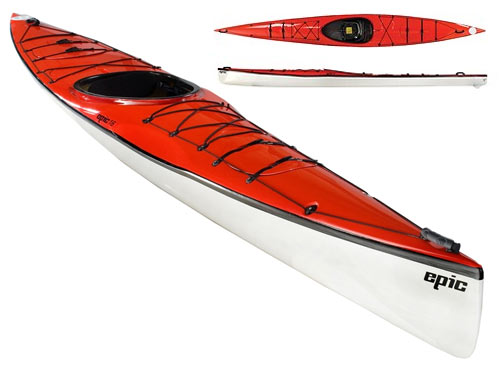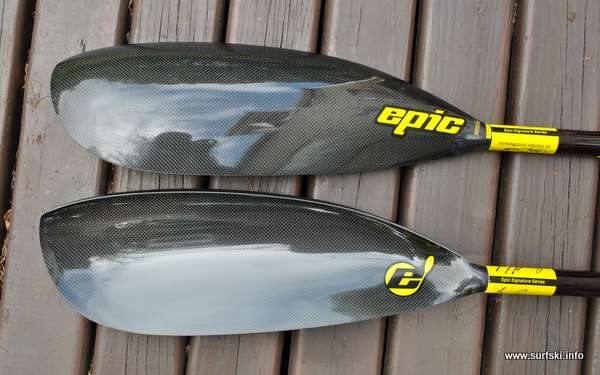Today I went to kanosport.nl-shop to pickup a test-kayak. Eric offered me the use of one of his demo-kayaks for testing. By mail he proposed to the Epic 16X or 18X. So there was a choice to make and the evening before I was busy thinking about the two kayaks.
Difficult choice because both are interesting kayaks.
After Googling a bit it seemed to me that the 16X was a good choice to start testing with, because she is more manoeuvrable and thus probably usable under more different conditions and by more paddlers of different levels. Another practical reason seemed that a 18X is almost 6 meter long and does not fit very well on the roof of a VW-polo.
On the other hand; paddling a very fast kayak like the 18X is a joy to my hart: I love it to split the water at high speed. And another reason for the 18X is that Freya rounded Australia with that kayak, so it must be a very capable kayak-design; just as capable as Freya herself
Discussing both kayaks with Eric, Wendy and Lennart, another argument came by: that most paddlers, coming to their shop for an Epic kayak, are only interested in the 18X.
Because it could well be that this is (partly) caused by more available review-information about the 18X, we concluded the 16X should be tested now to have a review on the 16X available as well.

16X
This 16X is not yet the newest version with improved rudder. The small fin at the underside of the rudder will become vertical movable like a skeg and thus also a key (when in the upward-position) to lock the rudder in the straight position. The newest kayaks are not yet available on the European market: only a very few of these kayaks are sold to Europe.
I must say hat I look forward to start paddling the X16. She is designed by Greg Barton: an Olympic champion. Most of his designs have thus the fingerprint of being fast. Even when you don't know that, when looking at the kayak you see a very long waterline and narrow, sharp bow meaning that she is fast.
I see however also a basic downside to this shape: part of the shape for speed is that the stern-part of the kayak is flatter and wider than usual. This could mean that she is more sensitive to weathercocking. That's probably the reason behind the small fin at the underside of the rudder; that's simply needed to compensate for weathercocking (I assume).
Linked to this speed of the Epic-kayaks is the behaviour of the kayak in waves. In a movie on YouTube they show the difference between a conventional- and an Epic seakayak. The movie shows the conventional kayak rocking when paddling over waves, while the Epic stays much more horizontal thus loosing less speed because of the waves. Epic claims that THIS is one of the reasons why an Epic kayak is fast.
I am curious find out all about these arguments and thoughts. So let's begin!! :smile:
By the way, almost forgotten to mention, I also borrowed an Epic paddle: the midwing.

Midwing
This is a modern wing-paddle and I hope to find out if this wing is easy to use at sea.
I have a Lendal Kinetic wingpaddle myself which is a compromise wing; not a real wing and compromising a bit on speed on behalf of functioning well at sea.
Long ago I tested an old model competition wingpaddle at sea to conclude that such a paddle plays tricks at me in sweepstrokes.
So I am happy that I can test a midwing as well; to show the paddle-community whether a wingpaddle makes sense at sea or not.
Be honest: how often do you see a wing-paddle being used at sea? Or are we, Europeans, more conservative than Americans?
